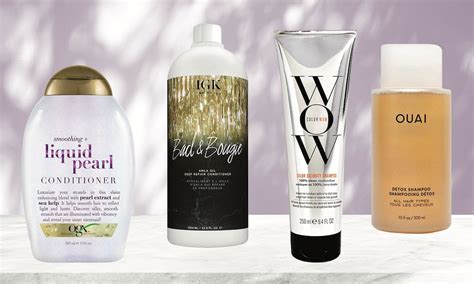Table of Contents

- Introduction
- Benefits of Tape-In Extensions
- Types of Tape-In Extensions
- Application and Maintenance
- Cost and Expected Lifespan
- Common Mistakes to Avoid
- FAQs
Introduction
Tape-in extensions are a popular choice for those seeking to add length, volume, and color to their hair without the commitment or damage associated with permanent options. This guide will provide a comprehensive overview of tape-in extensions, including their benefits, types, installation and maintenance process, cost and lifespan, common mistakes to avoid, and frequently asked questions.
Benefits of Tape-In Extensions
- Non-damaging: Tape-in extensions are applied using a thin, double-sided adhesive tape that bonds to the hair, eliminating the need for heat or chemicals that can harm natural hair.
- Versatile: Tape-in extensions can be tailored to create a wide range of looks, from subtle enhancements to dramatic transformations. They come in various lengths, colors, and textures to match any hair type or style.
- Quick and easy application: Installation typically takes 1-2 hours, making tape-in extensions a convenient option for those seeking a quick and hassle-free solution.
- Long-lasting: With proper care, tape-in extensions can last for 6-8 weeks, providing extended wearability and value for money.
- Reusable: Tape-in extensions can be removed and reused multiple times with proper maintenance, minimizing waste and maximizing investment.
Types of Tape-In Extensions
Tape-in extensions come in two main types:
- Single-sided: Adhesive is applied to one side of the extension’s weft, allowing for easy attachment to the natural hair.
- Double-sided: Adhesive is applied to both sides of the extension’s weft, providing a more secure hold and preventing slipping or tangling.
Application and Maintenance
Application
- Section the natural hair into thin layers.
- Apply the tape-in extension’s weft parallel to the root of the target hair section.
- Sandwich the natural hair between the two sides of the extension’s adhesive tape.
- Use a flat iron or heated pliers to seal the adhesive tape, ensuring a strong bond.
Maintenance
- Washing: Wash extensions less frequently than natural hair, using lukewarm water and sulfate-free shampoo and conditioner.
- Detangling: Gently brush extensions with a wide-toothed comb or paddle brush to remove tangles.
- Oil treatment: Apply a small amount of hair oil to the ends of the extensions to maintain moisture and prevent dryness.
- Re-taping: Extensions may need to be re-taped after 6-8 weeks to refresh the adhesive bond.
Cost and Expected Lifespan
The cost of tape-in extensions varies depending on factors such as the length, quality, and brand of the extensions. In general, expect to pay between $200-$600 for a full head of extensions. With proper maintenance, tape-in extensions can last for up to 8 weeks before needing to be re-taped.
Common Mistakes to Avoid
- Overlapping extensions: Avoid placing extensions too close together, as it can lead to visible lines or an unnatural look.
- Improper application: Ensure extensions are applied correctly, parallel to the root and with a secure bond, to prevent slipping or damage to natural hair.
- Over-washing: Excessive washing can weaken the adhesive bond and shorten the lifespan of the extensions.
- Heat damage: Avoid using hot styling tools directly on the extensions, as it can damage the adhesive and cause premature wear.
- Improper brushing: Use a wide-toothed comb or paddle brush to avoid snagging or damaging the extensions.
FAQs
- Are tape-in extensions reusable? Yes, tape-in extensions can be removed and reused multiple times with proper maintenance.
- Can I color or bleach tape-in extensions? Yes, but it is recommended to consult with a professional hair stylist to avoid damaging the extensions.
- Do tape-in extensions damage natural hair? When applied and maintained correctly, tape-in extensions do not damage natural hair. However, improper application or removal can cause breakage or thinning.
- How often should I re-tape extensions? Extensions typically need to be re-taped every 6-8 weeks to refresh the adhesive bond.
- Can I swim or style tape-in extensions? Yes, extensions can be worn while swimming or styling, but it is important to avoid direct heat or chlorine exposure.
- What is the best way to remove tape-in extensions? Use a professional-grade removal product specifically designed for tape-in extensions.
Conclusion
Tape-in extensions offer a versatile and non-damaging solution for achieving a variety of hair transformations. By understanding the benefits, types, application and maintenance requirements, and common mistakes to avoid, you can ensure a beautiful and long-lasting result. Whether seeking to enhance volume, length, or color, tape-in extensions provide a convenient and customizable option that caters to diverse hair needs and aspirations.
Coined Term
Hairstory: A chronicle and evolution of hair extensions, including the emergence and advancements of tape-in extensions.
Useful Tables
| Benefit | Description |
|---|---|
| Non-damaging | Applied without heat or chemicals |
| Versatile | Wide range of lengths, colors, and textures |
| Quick and easy application | Installed in 1-2 hours |
| Long-lasting | Up to 6-8 weeks with proper maintenance |
| Reusable | Can be removed and reused multiple times |
| Type | Adhesive Description |
|---|---|
| Single-sided | Adhesive on one side of the weft |
| Double-sided | Adhesive on both sides of the weft |
| Maintenance | Frequency |
|---|---|
| Washing | Less frequent than natural hair |
| Detangling | Gentle brushing |
| Oil treatment | As needed to maintain moisture |
| Re-taping | Every 6-8 weeks |
| Mistake | Impact |
|---|---|
| Overlapping extensions | Visible lines or unnatural look |
| Improper application | Slipping or damage to natural hair |
| Over-washing | Weakened adhesive bond |
| Heat damage | Damage to adhesive and premature wear |
| Improper brushing | Snagging or damage to extensions |
